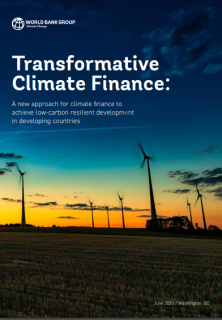
Climate finance has made significant progress in recent years. Building on years of increases, in 2017 and 2018 annual climate finance crossed the half-trillion dollar mark for the first time. Climate-related development finance rose to $55 billion in 2017. The establishment of the Green Climate Fund (GCF) and the Climate Investment Funds (CIF) has created institutions specifically designed to program dedicated climate finance. All of this has supported climate action in developing countries, leading to decarbonization, increased resilience, co-investment, and job creation.
This report analyses options to make international public climate finance more transformative. The report identifies eight sets of levers to drive climate action: project-based investments, financial sector reform, fiscal policy, sectoral policies, trade policy, innovation and technology transfer, carbon markets, and climate intelligence. It then examines how climate finance is deployed to address barriers to action for each lever and derives general principles for transformative climate finance based on this analysis relating to allocation of climate finance, use of different financial instruments, and other improvements in modalities and processes.
